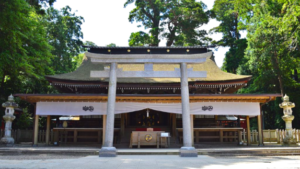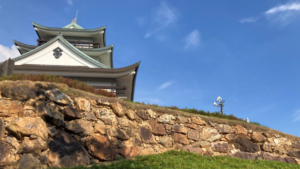Hakozakigu Shrine, Brings Victory and Good Luck
Hakozakigu Shrine is one of Japan's three major Hachimangu shrines (Usa, Iwashimizu Hachimangu, and Hakozakigu shrines). The main deity is the 15th Emperor Ojin, and his mother, Empress Jingu, and Princess Tamayori-hime are enshrined here. When Emperor Ojin was born, Empress Jingu put his placenta in a box called Hako (筥), buried it there, and planted a pine tree as a marker. Hence, "Hako-Zaki" is for this area. As the deity of victory and fortune, Hakozakigu Shrine has been revered by renowned warlords such as Toyotomi Hideyoshi, Kobayakawa Takakage, and Kuroda Nagamasa. Today, many people come to pray for victory in sports, academics, employment, examinations, and other matters.
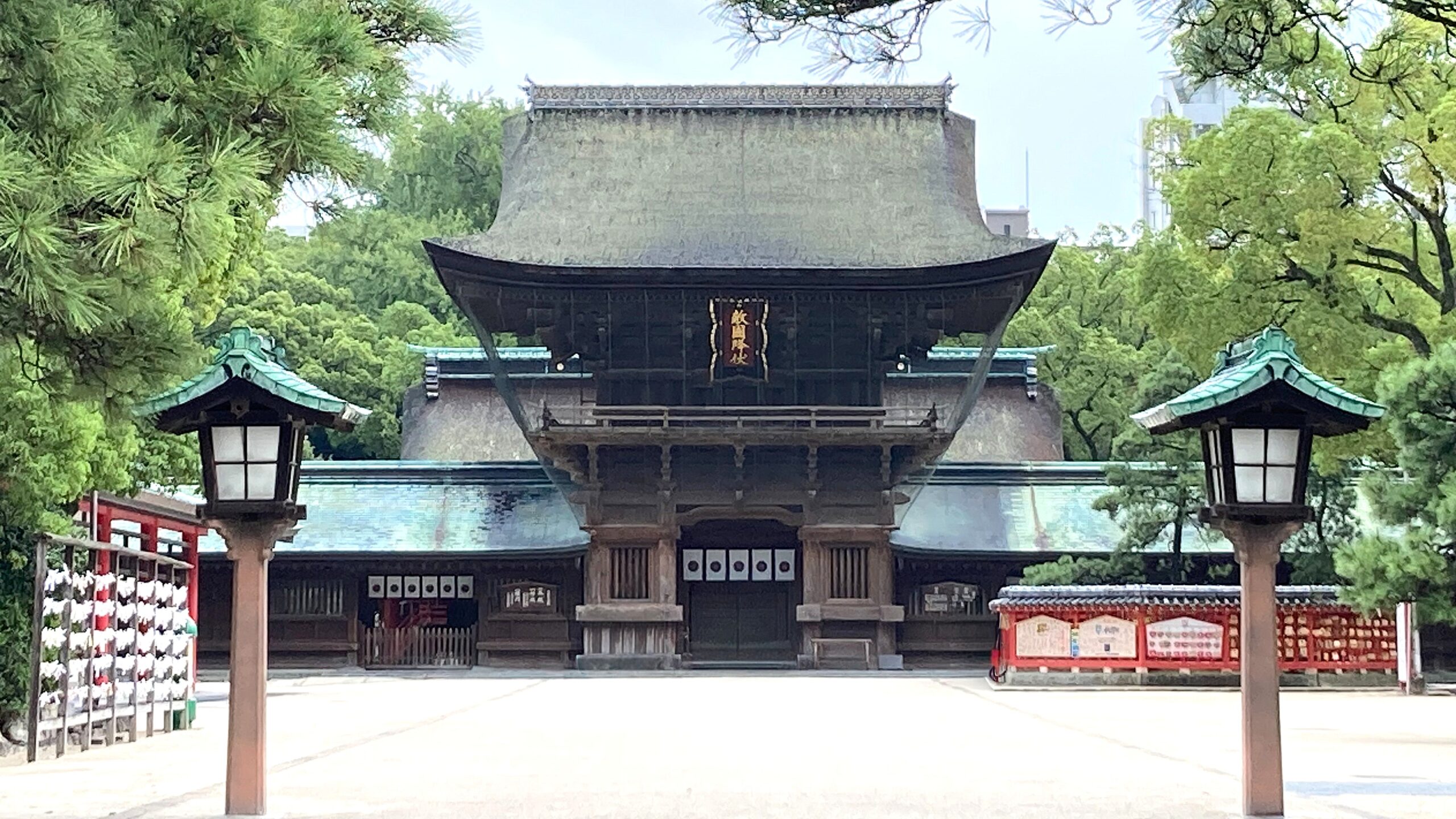
Emperor Daigo's Prayer for "Tekikoku Kofuku"
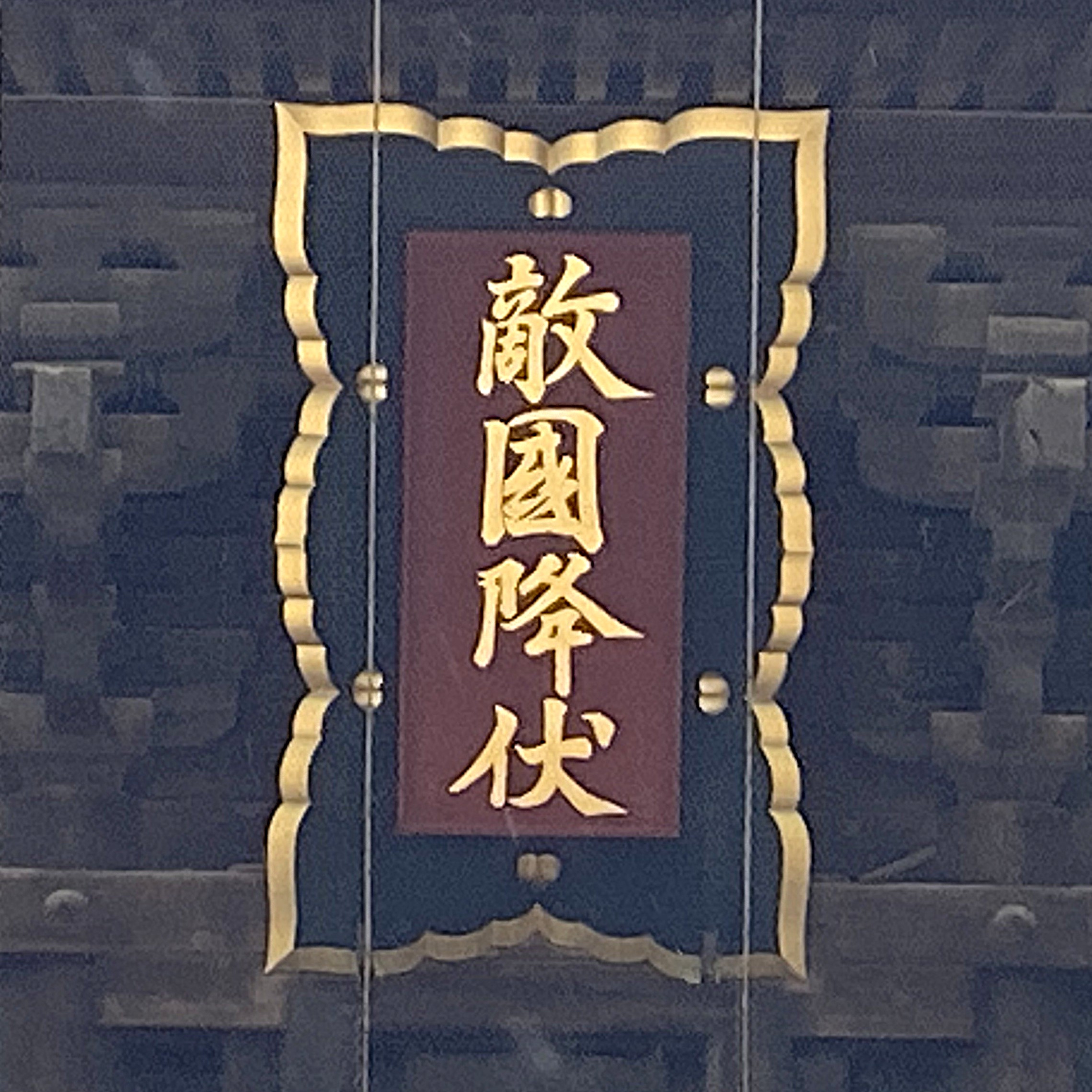
In 921, the 60th Emperor Daigo (885-930, reigned 897-930, 醍醐天皇) bestowed upon the Hakozaki Shrine a handwritten inscription of Tekikoku Kofuku (敵国降伏), Surrender of Hostile Nations, written vividly in gold ink on indigo paper, which led to the establishment of the Hakozakigu Shrine. "Tekikoku Kofuku" is a phrase that represents the "Royal Road," which guides enemies to voluntary submission through the power of virtue, rather than the Hado of forcing surrender through military force. It embodies the enduring wish of successive emperors that "if one conducts oneself rightly and offers prayers to the deities, all external calamities will naturally disappear, and the nation will maintain its peaceful state". The emperor's handwritten inscription evokes the emperor as a praying emperor. Emperor Kameyama granted 37 inscriptions of Tekikoku-Kofuku to the Hakozakigu Shrine after it was burned down during the Mongol invasion in 1274 (The Bunei Invasion). The faithful reproduction of one of these inscriptions is prominently displayed on the cypress bark-roofed main gate of Romon.
Emperor Daigo's Unrest
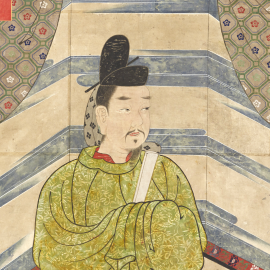
The year 921, when Hakozakigu Shrine was built, was amid a period of internal and external unrest that had persisted since the reign of the 59th Emperor Uda (867-931, 宇多天皇), father of Emperor Daigo. The Shilla continued to invade Tsushima, Iki, and Kyushu, and political instability remained after Sugawara Michizane (845-903, 菅原道真), Emperor Uda's right-hand man, was exiled to Dazaifu, the authority for defense and diplomacy of Japan in Kyushu. It can be said that Emperor Daigo was anguished over these issues and sought the protection of deities through prayer.
Response to Raids by Silla

From the 9th to the 10th century, Japan was impacted by the unstable situation in East Asia. In the 9th century, as Silla faced internal turmoil due to famine, plague, and social exhaustion, it began to frequently raid Tsushima, Iki, and Northern Kyushu. Dazaifu served as the frontline defense against these incursions (Source: Fuso Brief History). Higo Province (Kumamoto prefecture) was attacked in 893, Tsushima by a large force of 100 ships and 2,500 men in 894, and Iki in 895. These repeated attacks forced the Imperial Court to deal with them. Amid this turbulent situation in East Asia, the Tang Dynasty fell in 907, Goryeo was founded in 918, and Silla fell in 935. In response, Emperor Daigo built the Hakozakigu Shrine near Hakata Bay, where he bestowed the imperial inscription "Tekikoku Kofuku" (Surrender of the Enemy Nation). Unlike most shrines facing east or south, Hakozakigu Shrine faces northwest, that is, toward the Korean peninsula. Standing with the gate at the back, the straight approach leads its line of sight to Hakata Bay.
Response to Sugawara Michizane's Grudge

@ ColBase
Sugawara Michizane was promoted to a responsible position by Emperor Uda, the father of Emperor Daigo, to prevent the left minister Fujiwara Tokihira (871-909, 藤原時平) from running alone at the top of the Imperial Court. Born into a family of scholars, Michizane was appointed "Monjo Hakase," the highest rank of scholar at the age of 33, and he also demonstrated his ability as a politician. However, in 901, Emperor Daigo took Tokihira's false accusations to heart and exiled Michizane to Dazaifu. In 923, Emperor Daigo's son, Yasuakira, who had become Crown Prince at the age of two with Tokihira's backing, passed away, followed by the death of his Crown Grandson in 925. These tragic events were rumored to be caused by Michizane's grudge spirit. During the Heian period (794-1185), it was widely believed that the spirits of those who hated, held grudges, or died an unnatural death could bring misfortune to those who were still alive. Sugawara Michizane was defeated in a political dispute and exiled to Dazaifu, where he died in disgrace. Emperor Daigo, who had ordered his exile, feared Michizane's grudge spirit. In 923, Emperor Daigo restored Michizane to the position of Minister of the Right and served his memorial. In 930, however, lightning struck Seiryoden and Shishinden in the Kyoto Imperial Palace, killing several court nobles instantly. Although Emperor Daigo got out of the disaster, he was deeply shocked and eventually succumbed to fear and anxiety, leading to his death.
Hakozakigu Shrine of Good Luck and Victory
Visit the Hakozakigu Shrine, known for Good Luck and Victory, and feel the thoughts of Emperor Daigo, who was facing challenges from within and without. In addition, reflect on its long history of interaction with Southeast Asia while viewing the flat plaque, inscribed with Tekikoku Kofuku, symbolizing Emperor Daigo’s wish to lead with the power of virtue.
Recommendations to Visit
Hakozakigu Shrine
- Access: 5 minutes from JR Hakata Station on the Kagoshima line bound for Ebitsu. Get off at Hakozaki Station. 8 minutes walk.
Dazaifu Exhibition Pavilion
- Access: 40 minutes from JR Hakata Station on Liner Bus Tabibito. Get off at Dazaifuseicho-ato (大宰府政庁跡).

